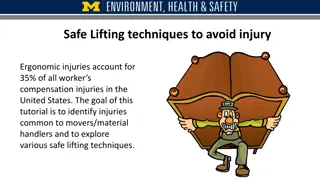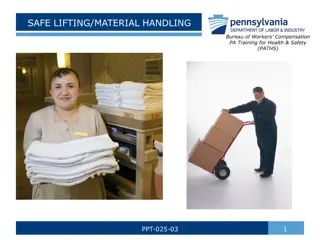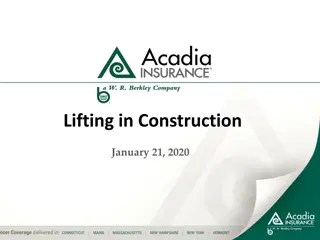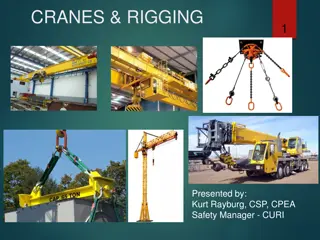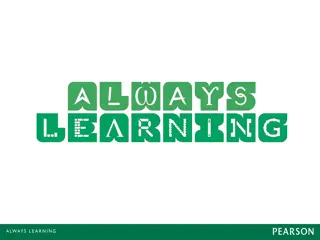Essential Lifting Techniques for Rigging Tasks
Learn about the essential lifting techniques for rigging tasks, including planning a rigging task using hand signals, determining object weight and size, selecting the right equipment like cranes, and using attachments such as slings, hooks, and shackles. Explore the importance of proper rigging equipment to ensure safe and efficient lifting operations.
Download Presentation

Please find below an Image/Link to download the presentation.
The content on the website is provided AS IS for your information and personal use only. It may not be sold, licensed, or shared on other websites without obtaining consent from the author.If you encounter any issues during the download, it is possible that the publisher has removed the file from their server.
You are allowed to download the files provided on this website for personal or commercial use, subject to the condition that they are used lawfully. All files are the property of their respective owners.
The content on the website is provided AS IS for your information and personal use only. It may not be sold, licensed, or shared on other websites without obtaining consent from the author.
E N D
Presentation Transcript
GOOD DAY EVERYONE I AM MR MOFOKENG N.I BOILERMAKER LECTURER TOPIC OF TODAY IS LIFTING TECHNIQUES
Planning a rigging task using rigging hand signals When you are on site you need to know what needs to be done each day When you, as the engineer, arrive on site, the foundation of the building will be ready for you to work on The first tasks that you need to do are: Attaching the base plates if they separate to the columns Lifting the columns into place and Lifting the beams into places or any materials
All these lifting tasks are called rigging tasks. Before you can start a rigging tasks, you need to know
The weight of the object that needs to be lifted. This is the mass of the load
The size of the load that needs to lifted. This information will be on the drawing
What equipment to use for the job. For example, must you use lifting equipment, hand operate equipment or mechanical hoist equipment such as crane
What attachments such as slings, hooks and shackles, the rigging equipment will need




